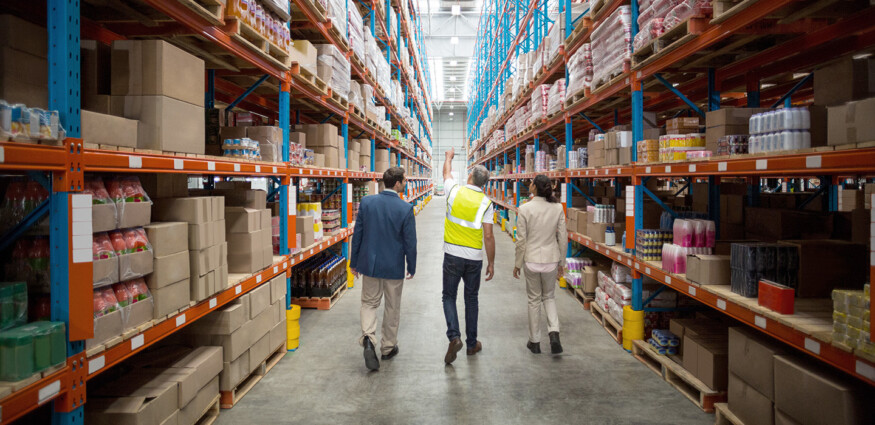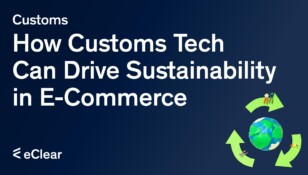Established in 1968, the EU Customs Union makes trading easier for EU-based companies. It harmonises customs duties on goods from non-EU countries. In practice, the customs union means that the customs authorities of all EU-27 countries work together as one. They uniformly apply customs tariffs to goods imported into their territory from third countries outside the EU. In contrast, they no longer use customs duties internally.
The ATLAS customs clearance system
With the introduction of the “automated tariff and local customs clearance system”, ATLAS for short, this was the entry into IT-supported customs clearance. It enables digital risk management of the parties involved to be carried out and the largely automated clearance and monitoring of the cross-border movement of goods.
Merchants may lodge entry and exit summary declarations, presentation and temporary storage summaries and customs declarations for the release of goods.
- into free circulation under customs law,
- into active refinement,
- into a customs warehousing procedure,
- under a transit procedure or
- into the export procedure
electronically and transmit it to the respective customs office. You will also receive the decision of the customs office and the notice of import duties or the determination and recognition of assessment bases in this way.
Customs inspections
A customs inspection is carried out by the inspection service of the respective main customs office that orders the inspection. The Union Customs and Tax Code regulate the rights and obligations of those involved in the inspection.
The order in which a customs inspection is carried out is determined based on various criteria. The higher the customs and tax revenue of the trader, the higher the risk of being inspected. Another audit factor is the types of goods traded.
As a rule, the procedures of customs inspections “Import” always follow the same pattern. Beforehand, general information is clarified within the framework of a questionnaire from the examination service.
As part of the inspection, the accounts payable and account transactions “third country” for the audit period are imported into the inspection program via a standard interface to the ERP system (e.g. SAP). Ideally, the customs inspector can automatically assign individual documents from the accounting system to the customs documents using the so-called ATC number. The ATC number is assigned by customs to identify an import customs transaction. Only those FiBu documents that cannot be assigned must be researched and assigned to customs documents, depending on the quality and thanks to checks carried out during the year. Only if this is not successful are import duties and import VAT (EuSt) subsequently levied on these transactions.
Again and again, because of organisational deficiencies in companies, other costs that must be added to the customs value were often not considered. These are, for example, tooling and development costs, licence fees or recalculations.
In addition to checking and monitoring the complete accounting documents for the customs declarations, attention is paid to the correct and consistent classification of the imported goods. Suppose the tariff classification needs to be clarified. In that case, classifications are made thanks to product descriptions, product samples and technical data sheets. In ambiguous cases, binding tariff information (BTI) must be obtained from the General Customs Directorate in Dresden.
At the end of the audit, a detailed audit report is prepared and presented in a final meeting, with the participation of management representatives. Likewise, customs duties are collected or refunded. More serious violations can lead to a fine or even criminal tax proceedings.
Typically, companies have various forwarding agents representing them for customs declarations. Whether to handle customs clearance in-house or through a representative must be made consciously. If the latter is chosen, various requirements must be agreed upon in writing in a process described as an annexe to a service contract.
Even if you use a service provider for customs clearance, the declarant is always responsible for correctly classifying and declaring the goods. The appointed representative always acts only on behalf of and with authority.
Suppose the representative (freight forwarder) needs to be provided concrete specifications via the goods catalogue. In that case, the same goods will be classified differently and declared to customs at different rates. This is a process that companies must avoid at all costs, as it leads to increased errors and can result in unpleasant surprises during customs inspections.
Scope and duration of a customs inspection
As a rule, the audit service has inspected the last three years. An inspection can be initiated for various reasons. Therefore, a distinction is made between the following inspections: import audit, preferential audit or foreign trade audit. The scope of the examination depends on the respective examination order. The review is usually completed after a few hours if only a random check occurs. The higher the import volume of the economic operator, the longer the audit may take. It depends on the following factors:
- Initial inspection or follow-up inspection
- Irregularities or no complaints
- Sample or full inspection
- Duration of the period under review
- Company size
- Number of imported products
Depending on how many irregularities are found, an inspection will take longer. It can drag on for weeks or even months.
Customs examination
A customs examination is ordered by customs at the time of import clearance at the point of entry (port, airport, border) if there are doubts about the correct description and classification of the goods or for other reasons. Suppose the trader uses a representative, such as a freight forwarder. In that case, the customs inspection is usually accompanied by him at his expense. It delays the customs clearance and the delivery date to the consignee of the goods.
On the other hand, a more extensive customs examination is ordered by the main customs office responsible for the economic operator’s district.
These are the contents of a company audit
The term “company audit” is customarily used for external audits. The responsible tax office carries out them routinely or for special reasons concerning all company income and other taxation bases. However, external audits only deal with certain types of tax, such as a special VAT audit or an external wage tax audit.
The company audit is carried out with advance notice in contrast to the inspection and the tax investigation, which are also a type of external audit. Suppose there is a high volume of international transactions. In that case, the Federal Central Tax Office audits directly. Here, the focus is on global group transfer prices and international VAT. In addition, pension insurance can also conduct audits in companies.
A company audit is carried out by the main customs office if, for example, it is a matter of undeclared work or compliance with the minimum wage.
For large companies, a tax audit usually takes place every year.
Conclusion: If you decide to carry out customs clearance in your name and on your account, you will need qualified personnel and a well-developed internal control system that will detect weaknesses and irregularities.
With ClearCustoms, eClear offers a full-service customs clearance product that handles all customs-related tasks.
ClearCustoms is complemented by the VAT solution ClearVAT. With ClearVAT, your sales of goods to B2C consumers are VAT-free in all EU-27 plus Switzerland, the UK, and Norway, enabling retailers to expand into European markets even faster and outsource VAT risks and declaration obligations.
About the product: ClearVAT offers a full-service VAT clearing for all EU-27. You thus map your B2C goods sales VAT-free and minimise the liability risk abroad.








